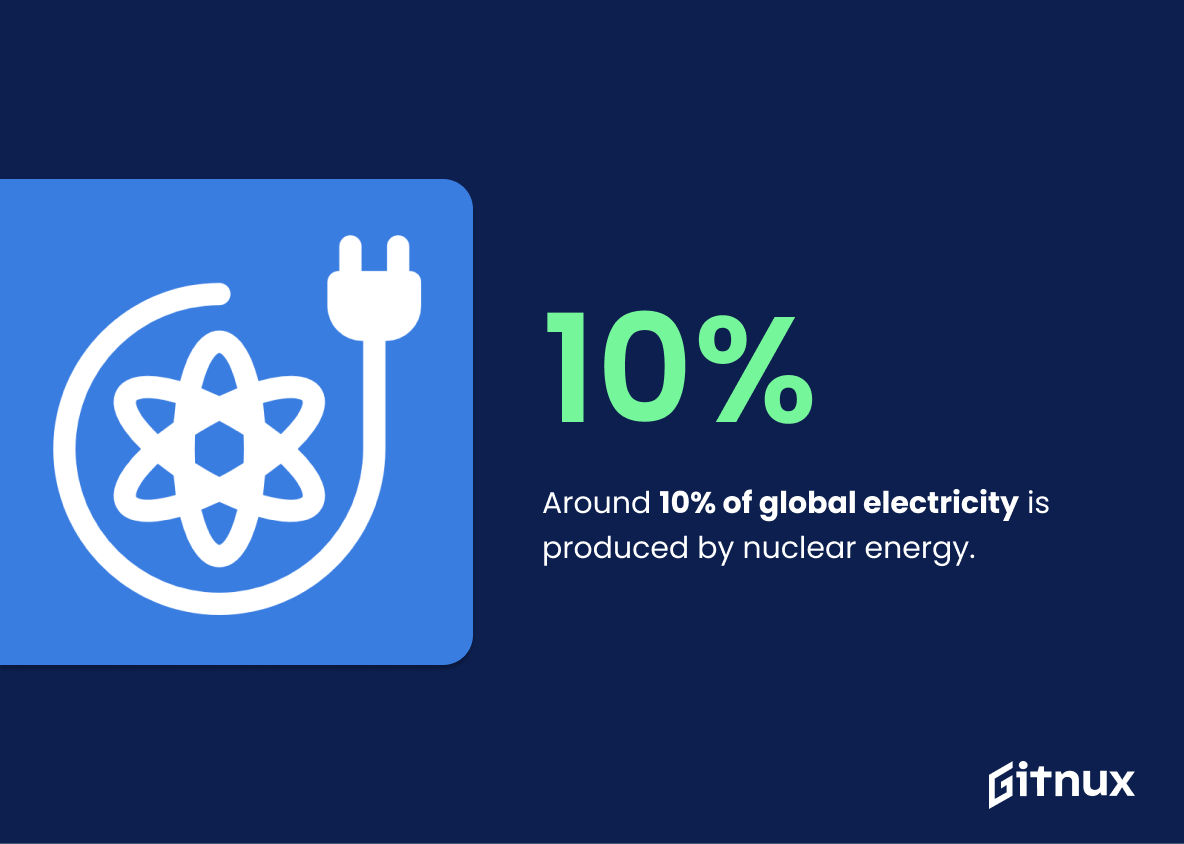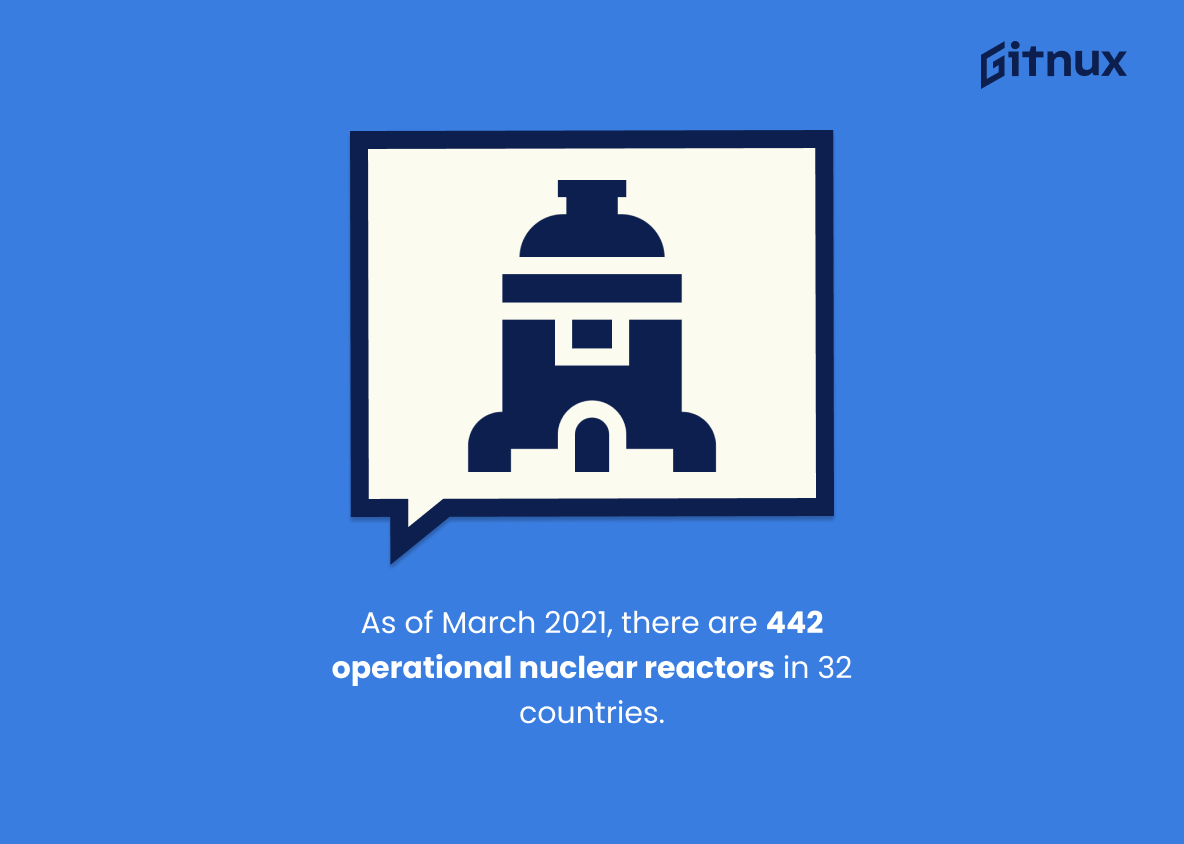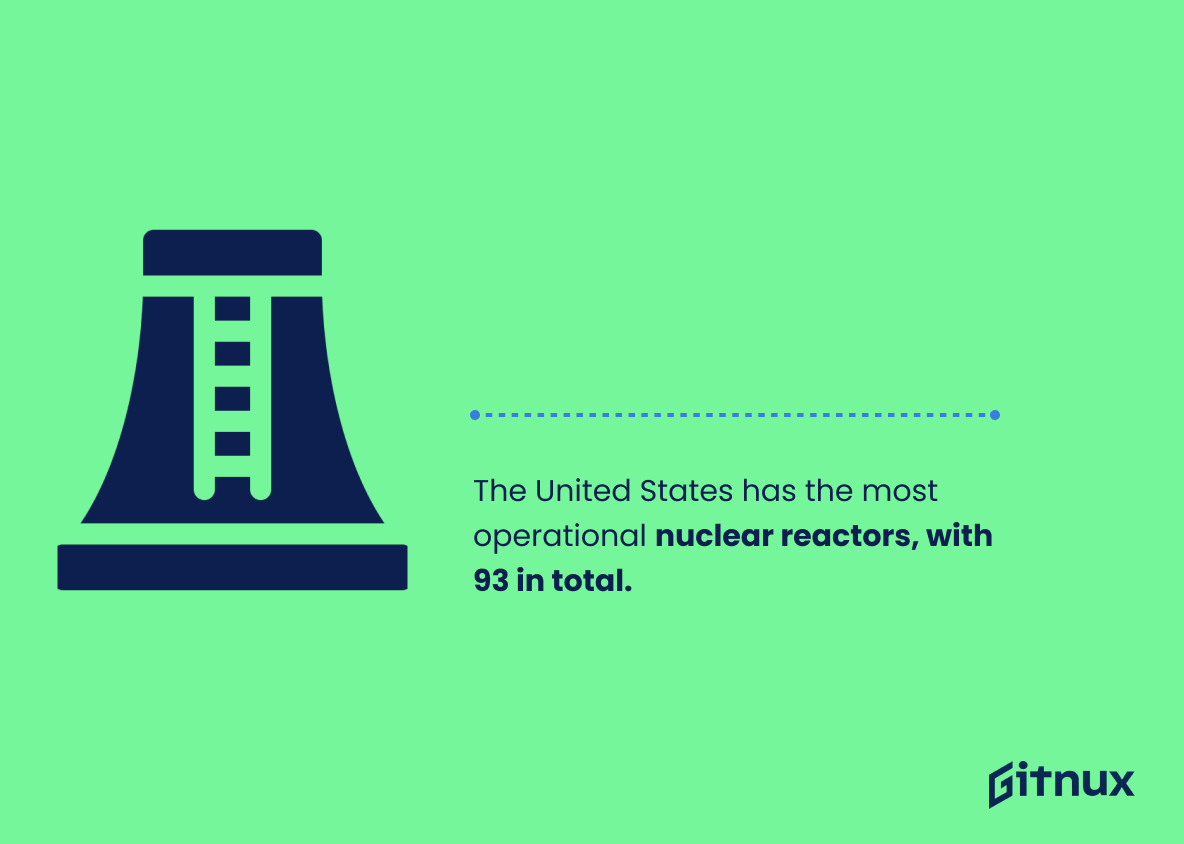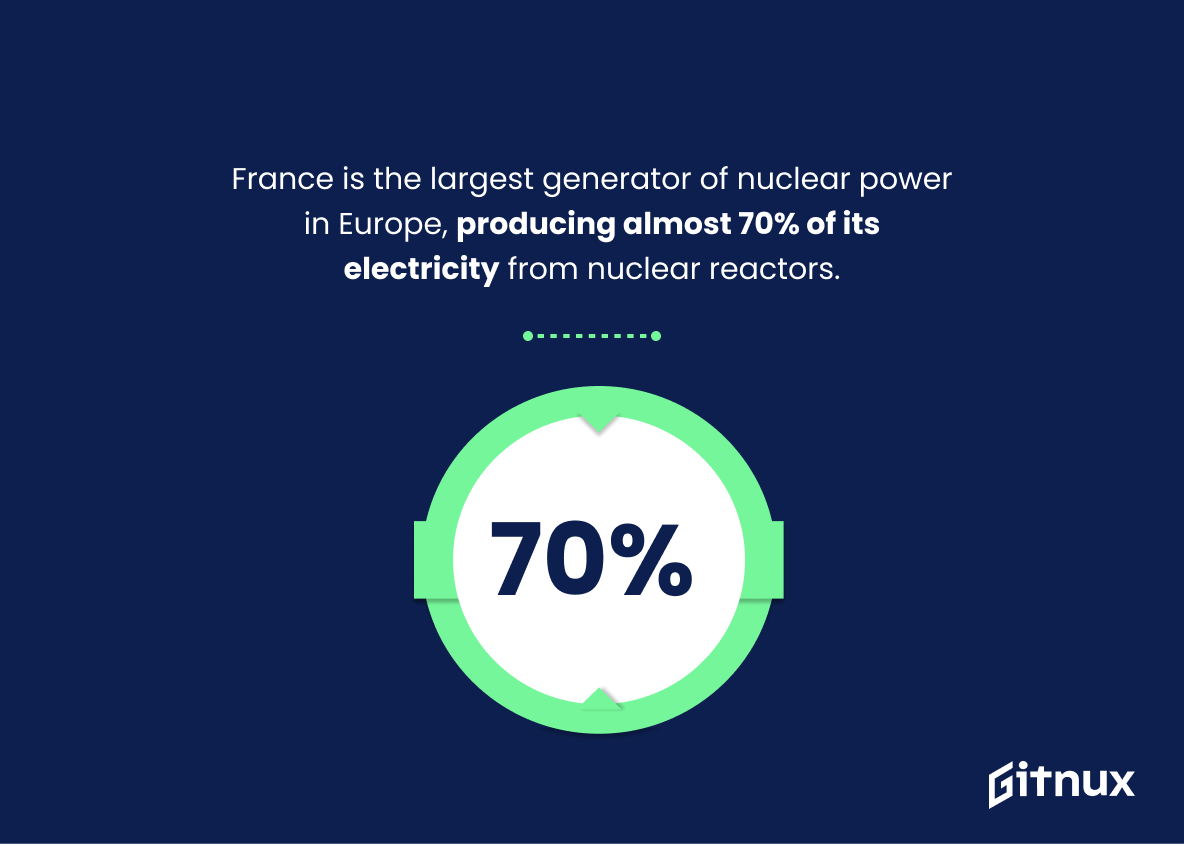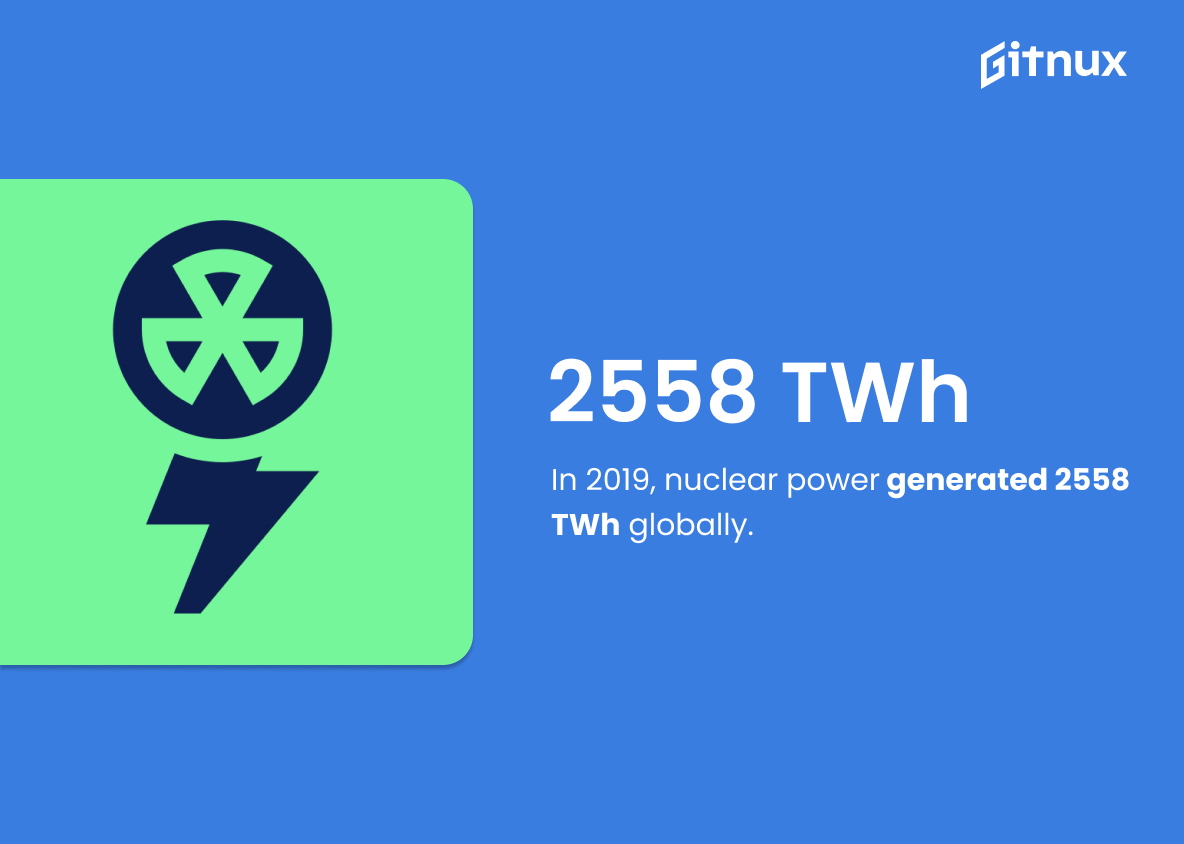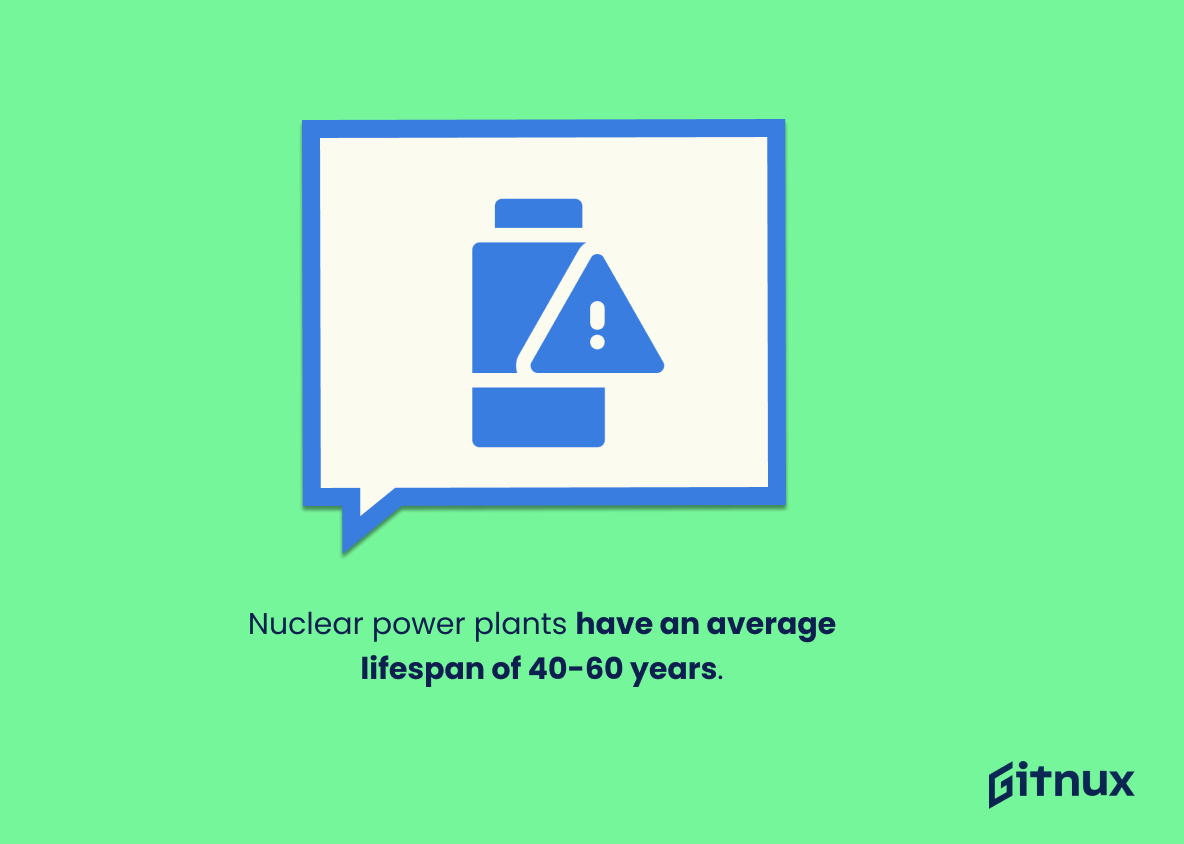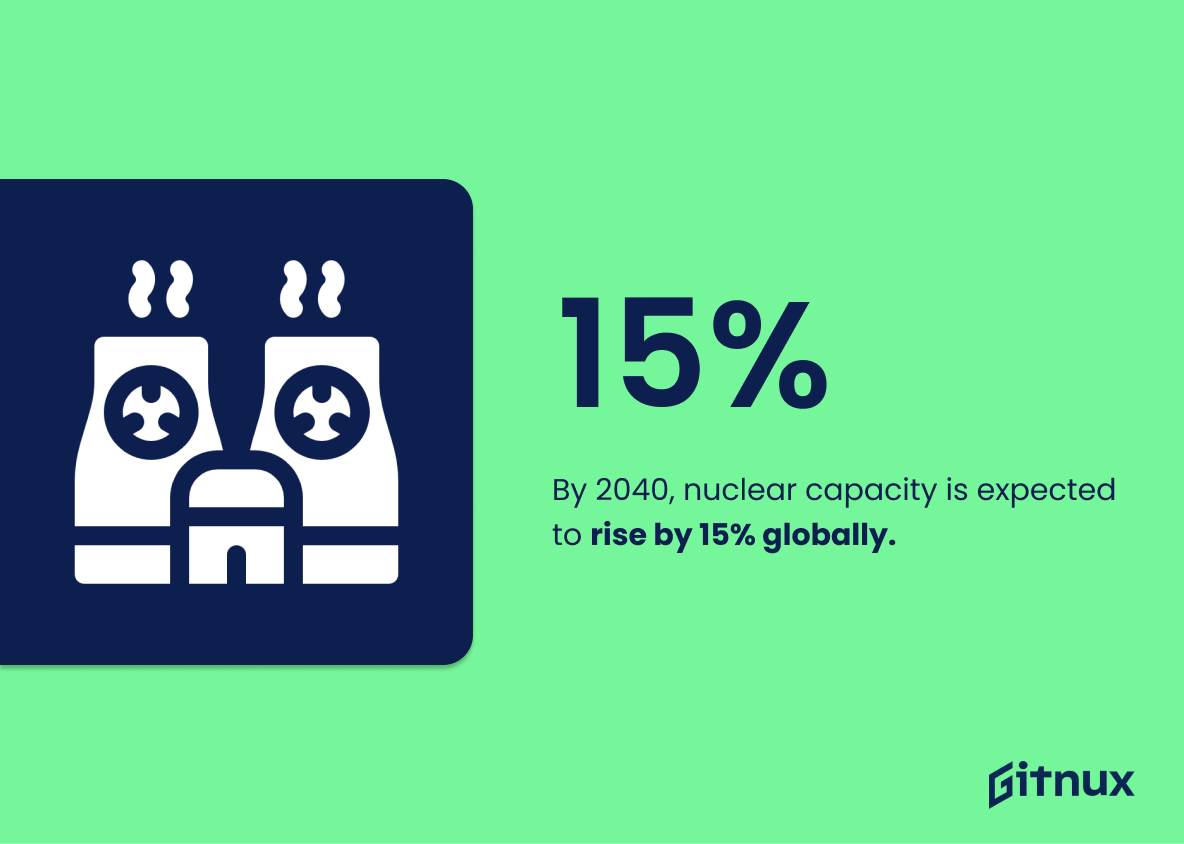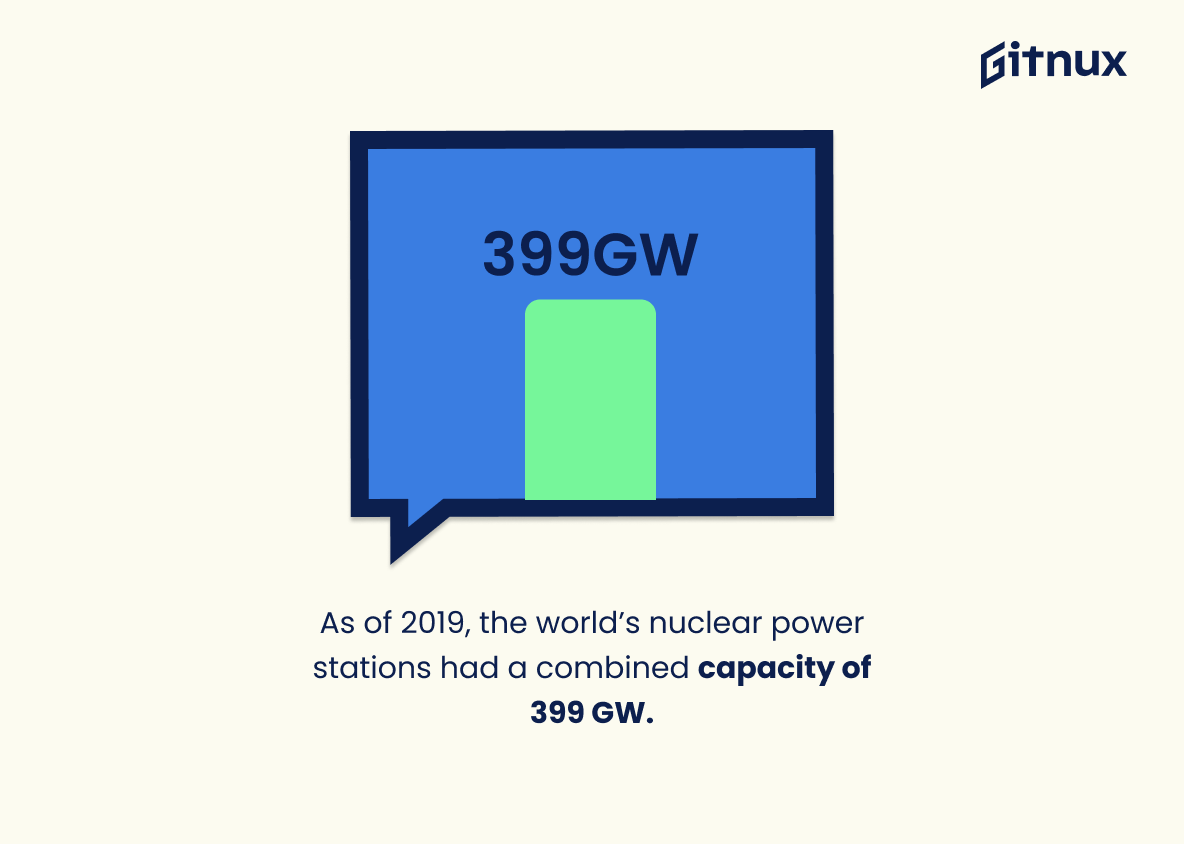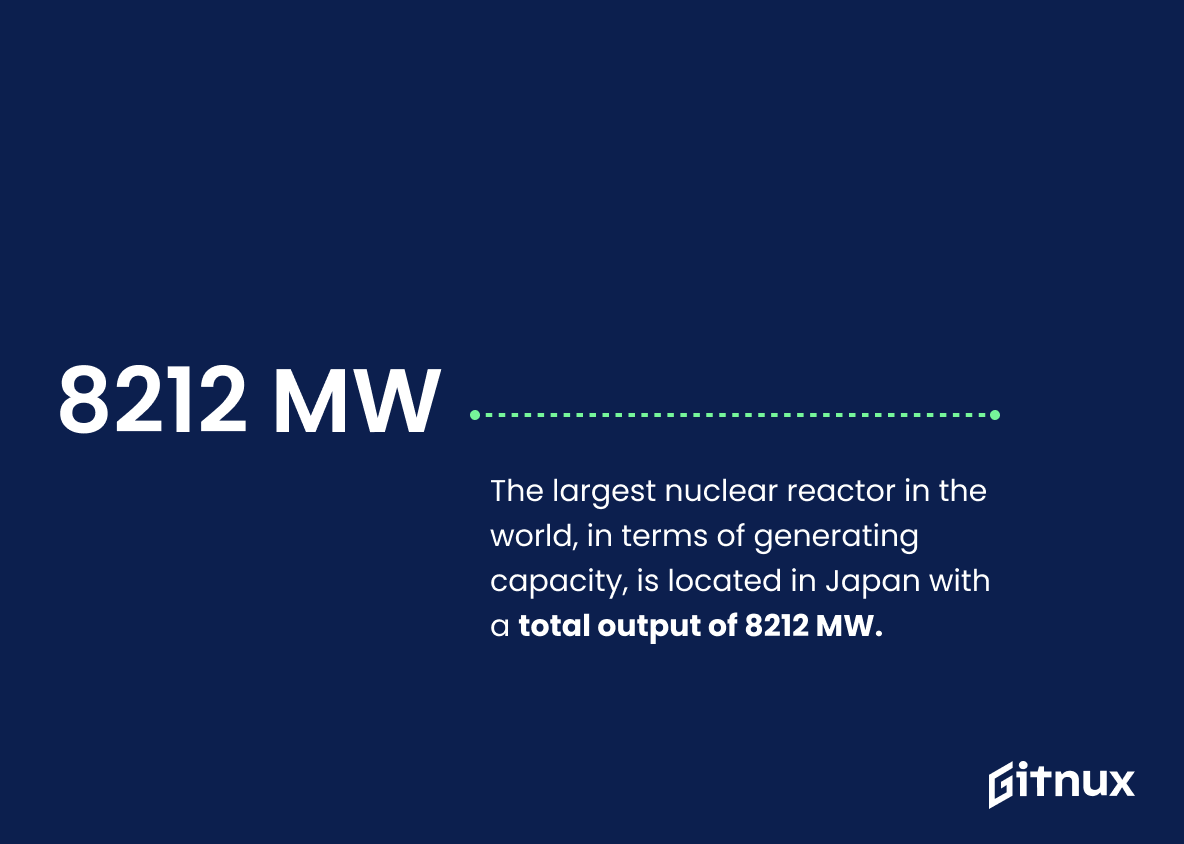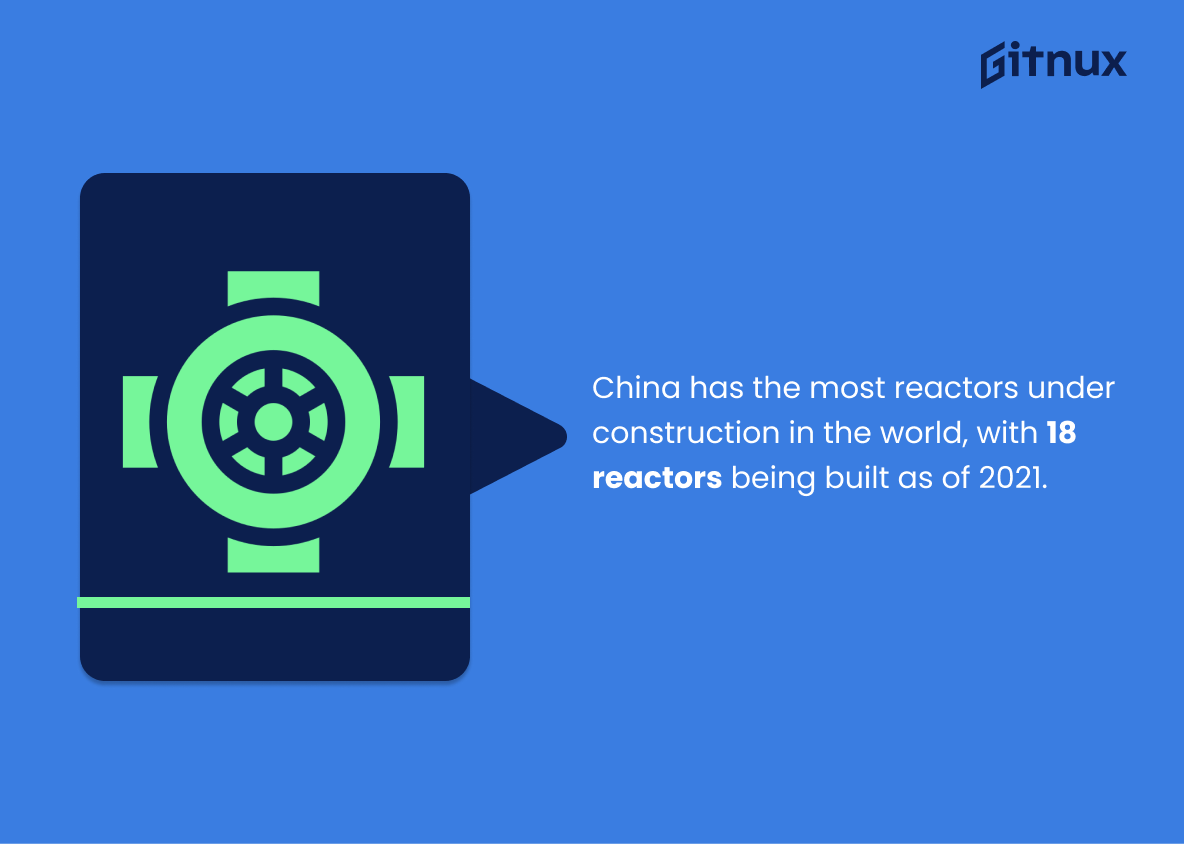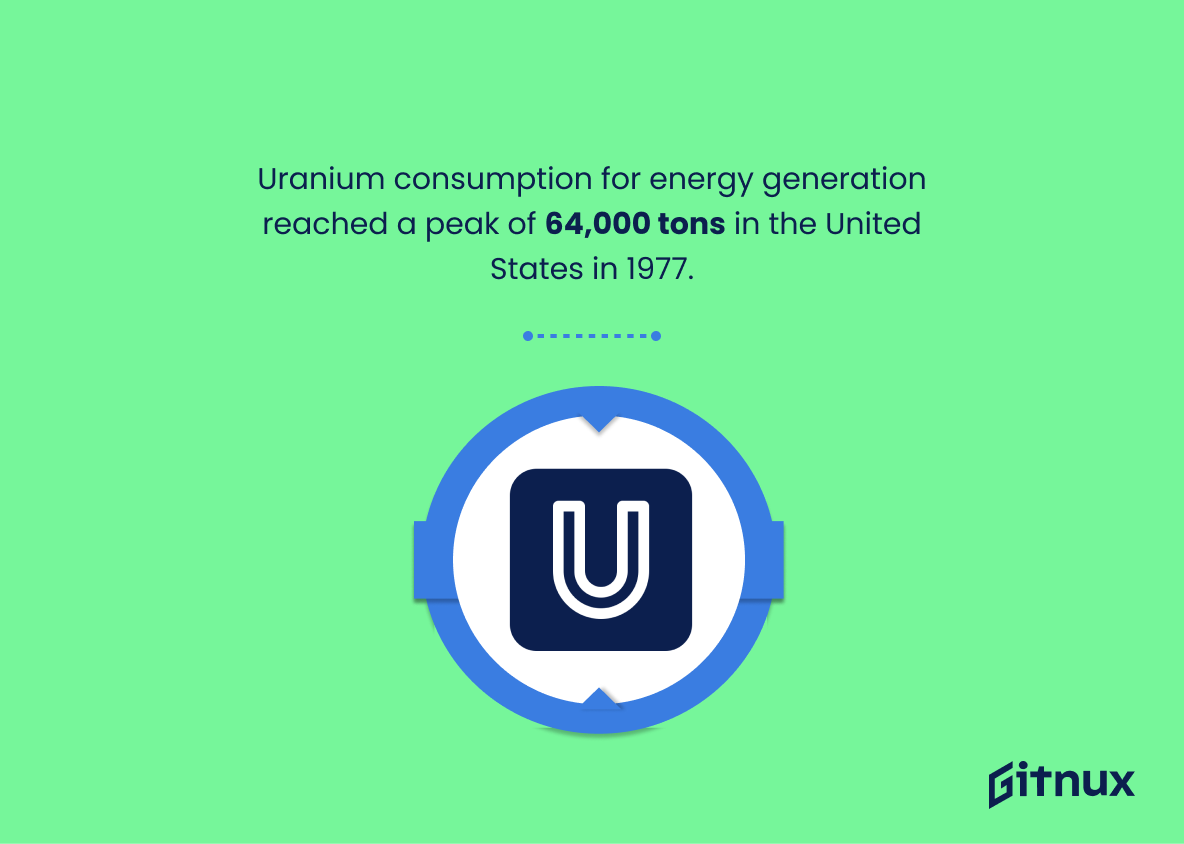Navigating through the intricate world of energy production, one cannot overlook the significant role of nuclear power. Boasting an impressive track record of providing a colossal portion of the global energy supply, nuclear power is an enigma wrapped in a complex blend of technological marvel, intriguing statistics, and contentious debates. Whether you are an ardent advocate, a curious scholar, or a concerned environmentalist, this blog post will spotlight invaluable insights into the remarkable world of nuclear power. We invite you to delve into a sea of riveting statistics that reveal the true capacity, global penetration, and environmental implications of nuclear energy. It’s time to unravel the facts, filter the noise, and discover the naked truth about nuclear power through the lens of data and figures. Let’s embark on this fact-filled journey, shall we?
The Latest Nuclear Power Statistics Unveiled
Around 10% of global electricity is produced by nuclear energy.
Delving into the realm of nuclear power, it’s enlightening to note that a significant portion of our global electricity, approximately 10%, finds its life force in this type of energy. This compelling figure provides a glimpse into the substantial role that nuclear power plays on the global stage, despite the controversial discussions that often surround it. Comparatively, the influence of nuclear energy is undeniable when understanding our world’s ever-increasing hunger for electricity. This figure, quietly standing at 10%, serves as a testament to nuclear power’s potential to contribute even more significantly to the global energy mix in the future. So, as consumers of this energy, we must weigh its benefits against potential risks informed by this statistic and revisit nuclear power’s place in our grand energy scheme.
As of March 2021, there are 442 operational nuclear reactors in 32 countries.
Serving as the beating heart of our exploration into Nuclear Power Statistics, the intriguing fact – that there are 442 operational nuclear reactors spread across 32 countries as of March 2021- weaves an insightful narrative. This statistic not only underlines the global acceptance and enticing lure of nuclear power, but it also highlights the diversity and extent of its reach. It speaks volumes about the presence of nuclear power, not as a rare novelty but as a well-entrenched part of the international energy tapestry, painting a picture of the world’s widening reliance on nuclear energy. Consequently, this figure serves as a barometer, providing us with an in-depth understanding of where we stand today in the landscape of nuclear power.
The United States has the most operational nuclear reactors, with 93 in total.
Highlighting the United States as the holder of the globe’s most robust collection of operational nuclear reactors, with an impressive tally of 93, paints a compelling portrait of its pioneering and dominant role within the sphere of nuclear energy. Such a statistic reflects the intricate relationship between the United States’ energy policy, technological innovation, and environmental stewardship efforts. In a blog post centered on Nuclear Power Statistics, this revelation elevates the discourse by delivering critical insights on nation-specific adoption of nuclear power, conveying the extensive infrastructure required, and sparking conversations on the global landscape of nuclear energy dependency.
Nuclear power generates no air pollution or harmful CO2 emissions.
In the realm of Nuclear Power Statistics, this particular detail – the lack of air pollution and harmful CO2 emissions from nuclear power – stands as a beacon of environmental optimism. It underlines nuclear power as a promising pathway towards a cleaner, sustainable, and less carbon-centric energy future. This key statistic, integrated seamlessly within the broader narrative, elevates the discussion to encompass not only the technical and economic dimensions of nuclear energy, but the critical environmental implications as well.
France is the largest generator of nuclear power in Europe, producing almost 70% of its electricity from nuclear reactors.
In the realm of nuclear power statistics, France’s prominence shines brightly as Europe’s unfaltering beacon of nuclear energy. Illuminating the power of nuclear technology, France generates a stunning 70% of its electricity from nuclear reactors. This jaw-dropping figure not only places France at the forefront of nuclear power within the European landscape, but also serves as a testament to the potential of nuclear energy. Overall, this figure is worthy of emphasis in a blog post about Nuclear Power Statistics due its reflection of nuclear energy’s capabilities when embraced by a nation.
In 2019, electricity generation from nuclear power worldwide was around 2558 TWh.
Showcasing the statistic of worldwide nuclear power generation as around 2558 TWh in 2019 gives our readers a tangible measure of nuclear energy’s role in global electricity production. It provides a clear snapshot of the current state of nuclear power, helping us to chart its evolution and assess its potential growth. It is an ideal beginning point when piecing together the big picture of nuclear power’s contributions to meeting global energy demand. By putting this number in context – how it changes over the years or stands relative to other energy sources – we can create a multidimensional perspective on the significance of nuclear power in our energy landscape.
Nuclear power plants have an average lifespan of 40-60 years.
Imagining the pulsating heart of a nuclear power plant, it beats for an impressive 40-60 years on average. This compelling lifespan places Nuclear power not only as a significant player in energy production today, but it highlights our deep-seated reliance on its contribution in the forthcoming decades. It speaks powerfully to the potential long-term supply of clean and reliable energy. However, it also hints at the profound responsibilities and challenges attached to the decommissioning, waste management, and succession planning associated with these energy giants. Therefore, in the intricate tapestry of nuclear power statistics, this particular thread of information demands our attention and comprehensive understanding.
Global investment into nuclear power in 2020 was around USD 32 billion.
Globally, a whopping USD 32 billion was funneled into nuclear power in 2020, underscoring the pivotal role this energy source is playing in the contemporary world. This massive figure – quite literally a power-packed statistic – mirrors the earnest commitment of various nations towards harnessing the raw, atom-splitting might of nuclear energy. It punctuates the conversation about the world’s shifting energy policies and affirms nuclear power’s expanding position in it. Weaving this number into our analysis of nuclear power statistics underscores the undeniable economic magnitude associated with this form of energy and illuminates the financial implications of staking our future on the atom.
In the United States in 2020, 789.0 billion kWh of electricity were generated from nuclear power.
The illumination of this incredible 789.0 billion kWh statistic forms a crucial cornerstone in understanding the vast landscape of nuclear power in America in 2020. The sheer magnitude of this figure is not just a number, but a testament to the immense role nuclear power plays within the spectrum of the US energy matrix. It’s a vivid testament, powering the narrative of nuclear energy’s undeniable contribution to the country’s energy output, embodying the force slowly but steadily carving out America’s path towards clean and sustainable electricity generation. In essence, it’s a beacon of enlightenment in our blog post journey to decipher the pulse and potential of nuclear power statistics.
In 2020, 52.3% of the U.S.’s clean energy production came from nuclear power.
Highlighting an intriguing reality from the previous year, the assertion reveals that over half of the clean energy produced in the United States, precisely 52.3%, was not generated by wind, solar, or hydro power, but rather from nuclear sources. What this figure serves to underline is the substantial role nuclear power plays within the arena of clean energy, a testament to its ascendance and potential in mitigating reliance on fossil fuels. Dissecting such a figure in a blog post about Nuclear Power Statistics would certainly spice up the narrative with a vivid grasp of nuclear power’s current state in America’s energy production scene. This audacious performance of nuclear power in 2020 also sets a platform for thought-provoking discussions on future trends, sustainability and environmental implications.
By 2040, nuclear capacity is expected to rise by 15% globally.
The projected 15% rise of nuclear capacity globally by 2040 isn’t a whisper in the wind – it is a neon sign illuminating an undeniable trend. It represents the emerging conviction that nuclear energy, a powerhouse in the arena of clean energy, is on a steady incline. As advocates of green energy sit up and take notice, the world watches, confirming that nuclear power isn’t fading into the history books. Quite the opposite, it’s a significant player in our shared green future. Posting that statistic in a blog about Nuclear Power Statistics offers a roadmap, hinting at the role of nuclear power in mitigating climate change and leading us towards a more sustainable future. It serves as a beacon, highlighting the anticipated trajectory of nuclear power in the coming decades.
As of 2019, the world’s nuclear power stations had a combined capacity of 399 GW.
Highlighting the collective capacity of the world’s nuclear power stations at 399 GW in 2019 acts as a concrete testament to the formidable role that nuclear power plays in the global energy landscape. Against the overwhelming demand for electricity in this digital age, this titanic figure underscores the substantial contributions of nuclear power in meeting this wide-scale demand. Moreover, it provides a stark illustration of the nuclear industry’s magnitude and its potential for further growth, possibly initiating both public and private efforts towards enhancing nuclear technology and safety features, vital in the broader discourse of Nuclear Power Statistics.
The largest nuclear reactor in the world, in terms of generating capacity, is located in Japan with a total output of 8212 MW.
Highlighting the magnitude of the world’s largest nuclear reactor, found in Japan, underscores the impressive potential of nuclear power. With a colossal output of 8212 MW, it’s not just a top scorer in Japan, but a global powerhouse. This information elevates our understanding of nuclear power landscapes, showing not just what’s possible but actually being done right now. Empowering the conversation with this solid figure, we obtain a keystone to compare and contrast nuclear capabilities worldwide. Therefore, we don’t merely observe the nuclear power discussion – we’re equipped to profoundly comprehend and engage in it.
China has the most reactors under construction in the world, with 18 reactors being built as of 2021.
Highlighting the statistic—that China leads the world with 18 nuclear reactors under construction as of 2021—builds a cornerstone for understanding the dominant role of China in forging the future of nuclear power. In a narrative about nuclear power statistics, it provides a striking reflection of China’s noteworthy strategies towards achieving energy autonomy and reducing carbon footprint. It pitches the magnitude of China’s nuclear ambitions, setting the stage for insightful discussions surrounding policy impacts, ecological implications, and the global nuclear power landscape. Equipped with this information, readers can gain a better context to comprehend worldwide nuclear power dynamics and trends.
Uranium consumption for energy generation reached a peak of 64,000 tons in the United States in 1977.
Casting our minds back to 1977, we find a shining node in the continuum of nuclear power history: a whopping 64,000 tons of uranium consumed for energy generation in the United States, standing as a powerful testament to the influence of nuclear energy in those times. This atomic anecdote bears relevance to our nuclear narrative not only as an undeniable record of peak uranium consumption, but also as a yardstick to gauge the evolution of nuclear power from then until the present day. It provides a prism that refracts into a spectrum of potential discussions around policy changes, technological advancements, environmental ramifications, and shifts in societal acceptance of nuclear power. In essence, this unique uranium uptake uncovers manifold dimensions of nuclear power dialogue, rendering it an indispensable element in the realm of nuclear power statistics.
On average, a nuclear power plant has a capacity factor of around 93%.
Peeling back the layers of the intriguing world of nuclear power, we uncover that the impressive 93% capacity factor of an average nuclear power plant serves as a numerical testament to its high level of efficiency and operational excellence. Weaving this substantial figure into our narrative illuminates the reliability of nuclear power plants; they are not just operational, but function near their maximum capacity for the vast majority of the time. Pondering upon these digits propels our comprehension about the consistency and stamina of nuclear power generation, adding a compelling stroke to the vivid canvas of nuclear power statistics.
The first commercial nuclear power station was the Calder Hall in the United Kingdom, opening in 1956.
In crafting a vivid narrative about Nuclear Power Statistics, a mention of Calder Hall often sets the stage. Not only was it the first commercial nuclear power station, but it also charted a new course in 1956, signaling the global transition towards nuclear energy. This piece of history serves as a crucial reference point for comparisons with current data, enabling us to measure progress, examine the evolution of nuclear technology, and ultimately comprehend the ramifications of harnessing nuclear power since its inception. This datum adds depth, painting a fuller picture of how far we’ve journeyed in the nuclear energy landscape – from a single plant in the UK to numerous installations worldwide.
A typical nuclear power plant creates approximately $40 million in labor income per year.
Just imagine the domino effect that a typical nuclear power plant can have on the economy each year. At an astonishing figure of approximately $40 million in labor income, these power plants not only energize our homes but also inject vigor into the local economies. Think of thousands of families whose financial stability may be tied to the operation of these power plants. In validating the economic importance of nuclear power, this statistic serves as an unignorable cornerstone. It paints the nuclear power industry not just as a provider of electricity but also as a significant contributor to individual and national economies. Ergo, our conversations about nuclear power cannot afford to ignore this impressive labor income statistic.
A single uranium fuel pellet the size of a fingertip contains as much energy as 17,000 cubic feet of natural gas, 1,780 pounds of coal or 149 gallons of oil.
“Dive deep into the heart of this powerful stat – a mere fingertip-sized uranium fuel pellet encompassing the energy equivalent to 17,000 cubic feet of natural gas, 1,780 pounds of coal or 149 gallons of oil. This demonstrates the extraordinary energy density of nuclear fuel, highlighting a compelling advantage in the ongoing quest for sustainable power source. In a blog post about Nuclear Power Statistics, this facet sets a dramatic premise, underscoring nuclear power’s potential to outpace traditional energy sources. By converting to nuclear power, we just might be getting the key to unlock a door to an efficiently powered future, reducing our dependence on traditional fossil fuels that have been at the crux of environmental problems worldwide.”
There have been three major accidents in the history of commercial nuclear power – Three Mile Island (USA 1979), Chernobyl (Ukraine 1986), and Fukushima Daiichi (Japan 2011).
As we delve deep into the nucleus of nuclear power statistics, it becomes essential to acknowledge the specter of major accidents that have punctuated the timeline of this industry. The incidents at Three Mile Island, Chernobyl, and Fukushima Daiichi are significant waypoints on this journey. These three events, occurring in disparate parts of the globe, not only demonstrate the universal challenges of harnessing nuclear power safely but also serve as critical lessons from the past that shape the defining protocols and safety measures of the present and future. It is through the lens of these events that we can truly appreciate the complexities involved in the extraction of nuclear energy and understand the gravity of the ramifications when things go awry. Hence, a dialogue on nuclear power statistics bereft of these incidents would be an incomplete narrative of this powerful yet challenging source of energy.
Conclusion
After delving into the depth of nuclear power statistics, we recognize its significant potential and the role it plays in our present energy mix. It’s evident that nuclear power, with its huge power generating capacity and lower carbon emissions, offers a viable solution to the escalating global energy demands. However, it’s also crucial to address the associated challenges such as nuclear waste management and safety. Therefore, as we progress towards a sustainable future, it’s essential to approach nuclear power with a balanced perspective, leveraging its strengths while concurrently addressing its drawbacks.
References
0. – https://www.www.eia.gov
1. – https://www.www.iaea.org
2. – https://www.www.iea.org
3. – https://www.www.world-nuclear.org
4. – https://www.www.power-technology.com
5. – https://www.www.energy.gov
6. – https://www.www.bp.com
7. – https://www.www.nei.org
8. – https://www.pris.iaea.org
